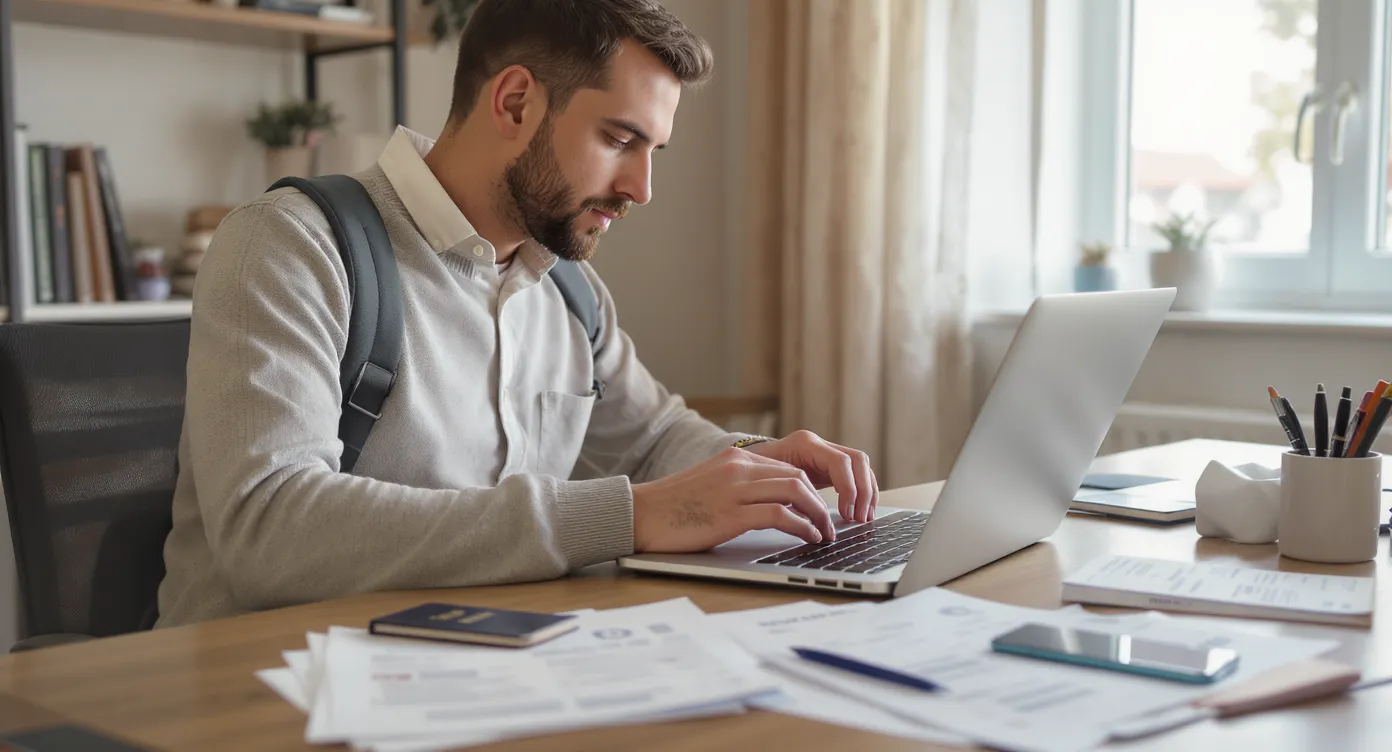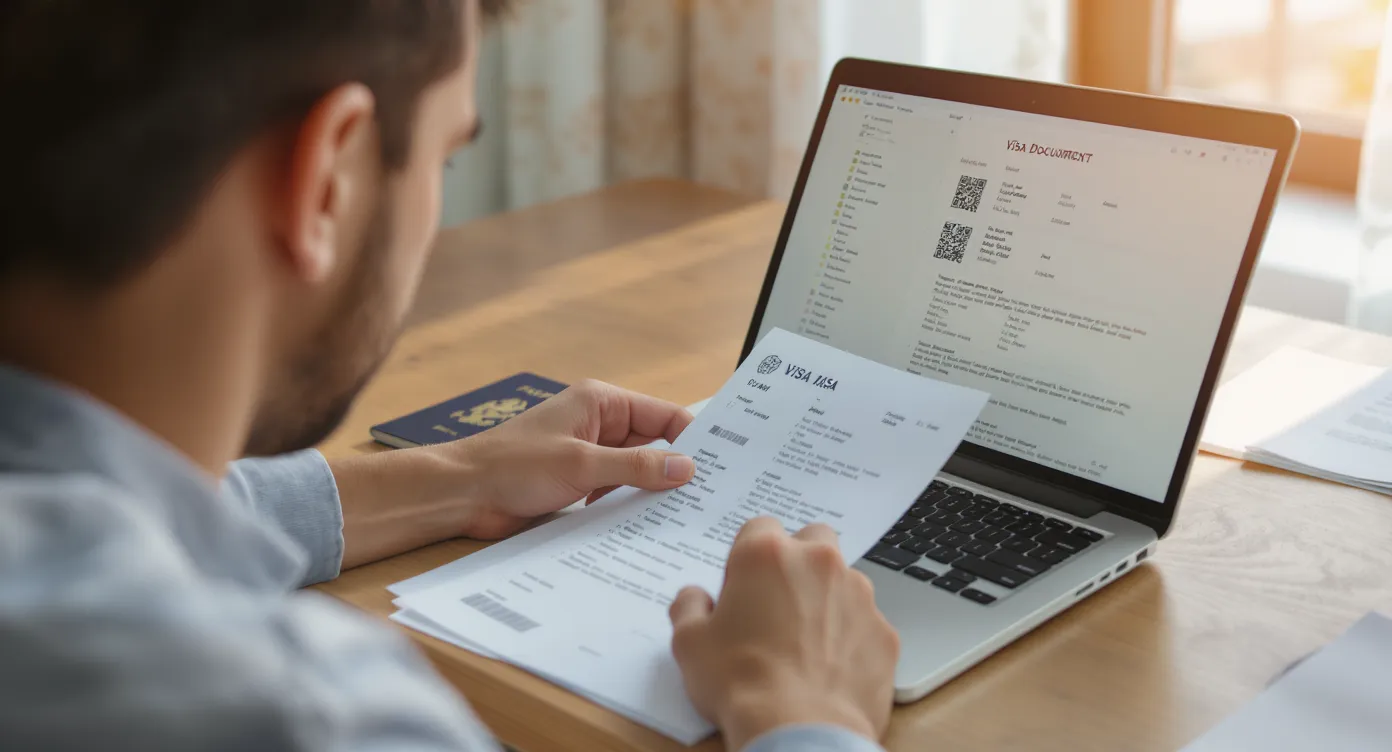Visa Success Rate: How to Improve Your Odds

Getting a visa approved is never a sure thing. In 2023, the average refusal rate for Schengen short-stay visas was 17.9 % (Source: European Commission), while U.S. B-class visitor visas were refused at an average clip of 15–20 % depending on nationality (Source: U.S. Department of State). Those numbers can look daunting when a once-in-a-lifetime trip, an important business meeting, or a study-abroad semester hangs in the balance.
The good news is that approval is rarely random. By understanding how consulates measure risk, preparing airtight documentation, and applying at the right moment, travelers can lift their personal visa success rate dramatically. Below you will find a practical, data-driven playbook that shows exactly how to improve your odds—backed by expert insights from the SimpleVisa compliance team, which maintains a 98 % approval rate across millions of electronic applications processed each year.
What Do We Mean by “Visa Success Rate”?
Visa success rate is the percentage of submitted visa or electronic travel authorization (eTA/ETA) applications that result in an approval rather than a refusal, rejection, or request for further evidence.
For travelers, a high success rate means peace of mind and freedom to finalize travel plans early. For airlines, online travel agencies (OTAs), and tour operators, it means fewer denied boardings, happier customers, and more ancillary revenue.
| Metric | Typical Traveler Goal | Typical Travel-Seller Goal |
|---|---|---|
| Approval (Success) Rate | 95 %+ for a single trip | 97 %+ across all customer applications |
| First-Pass Approval | Avoiding additional document requests | Faster booking-to-boarding journey |
| Processing Time | Under country average | Predictable to reduce support calls |
Why Applications Get Refused
Consular officers balance national-security, economic, and public-health interests. Most rejections fall into a handful of categories:
- Incomplete or inconsistent information (name mismatches, missing fields).
- Invalid or expiring passport.
- Insufficient proof of funds, employment, or ties to the home country.
- Incorrect visa type for the stated purpose of travel.
- Criminal or immigration violations on record.
- Late applications that arrive after the cut-off window or without biometrics slots.
Check our in-depth guide to the 7 Common Reasons Why Electronic Visa Applications Get Rejected for detailed examples.

10 Proven Ways to Lift Your Visa Success Rate
1. Research Country-Specific Rules Before You Book
Every destination sets its own criteria. Australia’s ETA forbids paid work, India’s e-Visa demands a passport valid six months beyond entry, and many Schengen missions now require biometric capture even for repeat travelers. Review the latest rules on the official government portal and cross-reference with trusted sources like SimpleVisa’s country pages.
2. Apply in the Optimal Time Window
• Too early: your visa may expire before departure.
• Too late: processing backlogs can derail flights.
A safe buffer is 30–60 days for standard visas and 7–21 days for most e-Visas. Our article When Should I Apply for an Electronic Visa? offers destination-specific lead times.
3. Use the Correct Visa Category the First Time
Picking “tourist” when you are actually attending a paid conference is a fast track to refusal. Match trip intent with the official category, even if it costs slightly more or asks for extra paperwork.
4. Triple-Check Application Data Against Your Passport
More than 20 % of rejections involve simple typos. Names, passport numbers, and dates must appear exactly as printed. Use capital letters where required and avoid nicknames or second languages unless the form explicitly asks.
5. Provide Strong Proof of Funds and Ties
Bank statements, employer letters, property deeds, return flight tickets, or school enrollment documents show that you will go home on time. Consular staff are trained to look for evidence that outweighs any perceived overstay risk.
6. Prepare Digital Documents in the Right Format
Wrong file sizes, blurry scans, or photographs with shadows trigger auto-rejections in many e-Visa portals. Follow the government’s pixel, DPI, and aspect-ratio instructions down to the letter. SimpleVisa’s upload wizard, for example, auto-flags non-compliant files before submission.
7. Anticipate Biometrics and Health Requirements
Vaccination certificates, TB tests, or yellow-fever cards can be mandatory in 2025. Schedule clinic appointments well in advance and keep originals and certified digital copies ready.
8. Monitor Application Status Daily
Most modern systems post requests for additional evidence (RFE) inside a secure portal. Respond inside 24–48 hours to avoid an automatic denial. Enable SMS or email alerts if offered.
9. Disclose Prior Visa Refusals Honestly
Failing to reveal a past denial is grounds for an immediate ban in many jurisdictions. Explain circumstances briefly and provide evidence of changed conditions if applicable.
10. Leverage Professional or Automated Assistance When Stakes Are High
If you run a travel business, integration with the SimpleVisa API or white-label app pre-populates forms, validates documents against 11 000+ rule combinations, and flags high-risk cases for manual review—lifting partner approval rates by up to 4 pp versus industry averages.

Case Snapshot: How an OTA Boosted Approval Rate from 92 % to 98 %
• Problem: High last-minute booking volume to East Africa led to frequent e-Visa denials and denied boardings.
• Solution: Embedded SimpleVisa’s eligibility widget at checkout and auto-emailed document checklists 15 minutes after purchase.
• Result:
– First-pass approval rate climbed to 98 % within 60 days.
– Visa-related support tickets dropped by 37 %.
– Ancillary revenue per booking rose by USD 5.60.
Read the full story in Why Travelers Abandon Visa Forms—and 6 UX Fixes That Convert.
Quick-Reference Checklist
Before you hit “Submit,” make sure you can answer Yes to every item below:
- Passport valid at least six months past departure and with two blank pages.
- All names and numbers match exactly across passport, flights, hotel bookings, and application forms.
- Proof of funds meets or exceeds destination minimum.
- Purpose of travel matches selected visa type.
- Digital photo meets background, size, and expression rules.
- All supporting PDFs or JPGs are clear, under size limits, and legible at 100 % zoom.
- No unanswered RFEs in the application portal.
If any item is missing, fix it before paying the fee.
FAQ
Does using an expedited or “priority” service increase my visa success rate? Priority processing speeds the queue but does not override eligibility checks. An incomplete file will still be refused.
How many times can I reapply after a refusal? There is usually no limit, but you must address the refusal reason. Re-submitting identical documents rarely works.
Will booking a return flight before approval help? A confirmed itinerary often strengthens proof of ties, but choose fully refundable or flexible tickets in case of delays.
Can SimpleVisa guarantee approval? No reputable provider can promise 100 % approval, because final decisions rest with government authorities. SimpleVisa maximizes your probability by automating rule compliance and error checks.
Ready to Tilt the Odds in Your Favor?
Whether you are a traveler anxious about a single trip or a travel brand responsible for thousands of customers, visa approvals do not have to feel like roulette. SimpleVisa’s automated platform combines real-time regulation data, document validation, and step-by-step guidance to deliver a 98 % success rate across 400+ partner sites.
Book a free 15-minute demo at simplevisa.com to see how you can raise your visa success rate today.